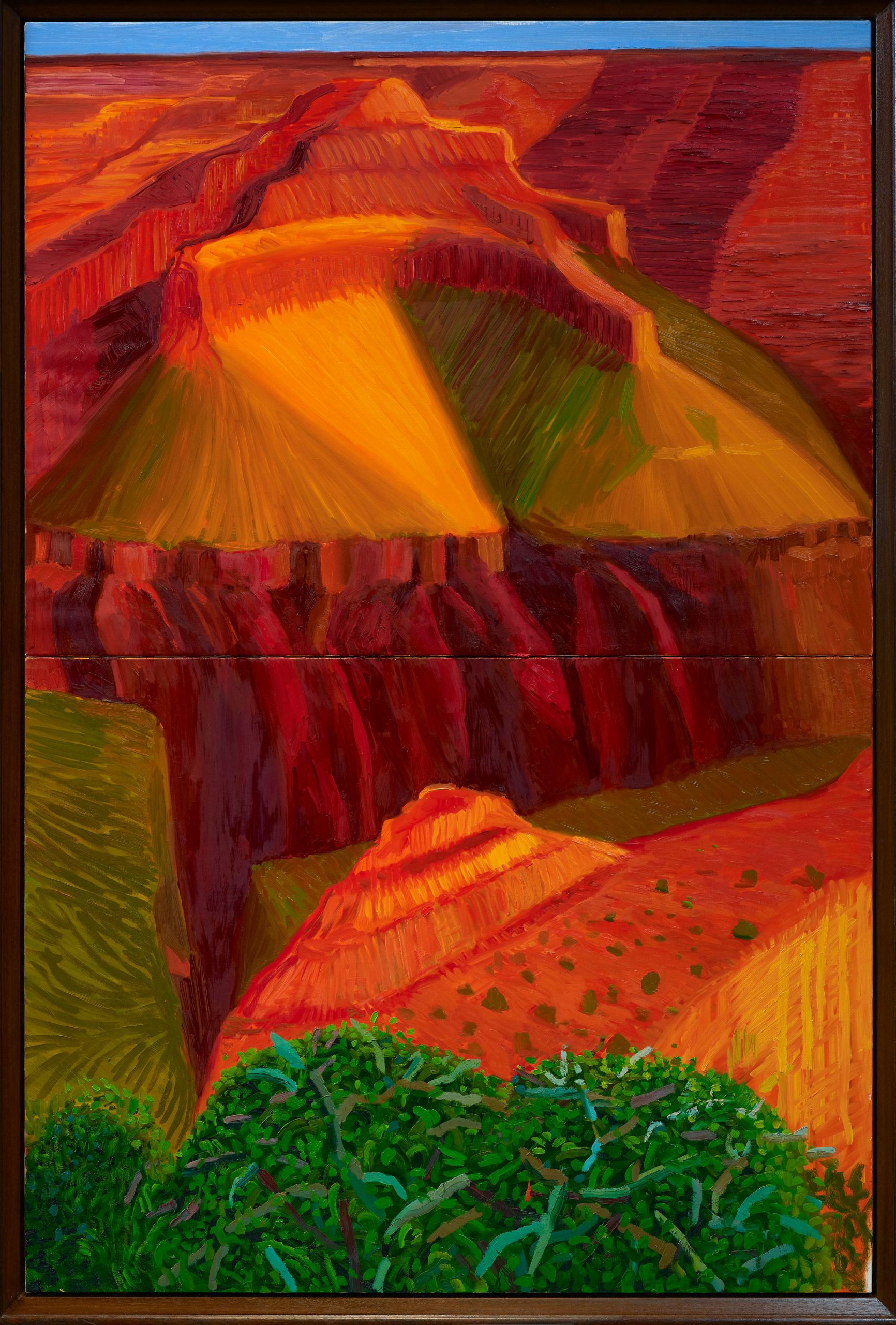In Focus: The David Hockney Grand Canyon image at the end of a years-long mission to 'photograph the unphotographable'
David Hockney's mission to create art that captures the natural wonder that is the Grand Canyon takes centre stage at a new exhibition of his work in Woking. Lilias Wigan went along.

Such is the enormity of the Grand Canyon that few artists have made it a subject for their work, finding its sheer scale difficult to translate visually and almost impossible to do full justice to. Yorkshire-born David Hockney (b. 1937) is one of the few who has risen to the challenge, using a technique born from photographic experiments.
He began experimenting with photography in 1967 with his first 35mm camera, but found limitations in its single viewpoint system. So, he developed a style using photographic collage, or photomontage. He would make composite Polaroid photographs, arranging them in a rectangular grid a system that which led to his making of images — referred to as ‘joiners’ — by a series of printed photographs, in a style reminiscent of Cubism. In these collages, the viewpoint shifts as your eyes travel across the image, adding movement and conjuring up the spirit of the subject with potent effect, while overcoming photographic confines.
Hockney photographed the Grand Canyon in 1982, commenting later that he wanted ‘to photograph the unphotographable … there is no question … that the thrill of standing on that rim of the Grand Canyon is spatial. It is the biggest space you can look out over that has an edge …' He took photographs with multiple viewpoints and combined them in his familiar grid format to make the collage Grand Canyon with ledge, Arizona (1982). His method allowed for numerous perspectives, enabling a greater sense of scale.
Returning twice to the Grand Canyon, in June and July 1997, Hockney sought to make more ambitious works. ‘I’d been contemplating some sort of big landscape of the West. Big spaces: that’s what was settling in my head. I was experiencing a growing claustrophobia (and) stronger, longing for big spaces’.
A year later, he painted a double canvas picture of what he saw tilted Double Study for a Closer Grand Canyon (pictured at the top of the page). It’s an exercise for the enormous panoramic work A Closer Grand Canyon (1998), which comprises a whopping ninety-six canvases. The study — now exhibited in David Hockney: Ways of Working at the Lightbox, Woking — conveys the emotional experience that Hockney had with the breath-taking expanse of the sublime American landscape.
The painting is composed of two canvases stacked on top of one another vertically. The most striking elements are the unusual perspective — we look onto, into and over the canyon all at once — and the vibrancy of colour.
The crimson cliff face of the canyon plunges out of sight as another peak protrudes beside it. Leafy foliage encroaches in the foreground, in stark contrast to the radiating warmth of the rock. There is no evidence of human interference.
Exquisite houses, the beauty of Nature, and how to get the most from your life, straight to your inbox.
The only sense of context is provided by a strip of blue sky at the top — the narrow horizon emphasising the immensity of the landscape beneath. With his manipulation of perspective, Hockney manages to conjure the spirit and impression of scale on a two dimensional surface.
The Lightbox exhibition offers an intimate look at Hockney’s working methods. It explores the artist’s processes across a wide breadth of media, including printmaking, computer software, drawings, painting and photography, and presents a greater understanding of how one practice has informed the other throughout his career. Except for a stint in Paris in 1973-75 and some extensive travelling around Europe, he has lived in California on and off since 1964, and turns constantly to his adopted homeland for inspiration.
David Hockney: Ways of Working is on view at the Lightbox, Woking until 19 April 2020. Tickets are available here. For times and other upcoming exhibitions, see www.thelightbox.org.uk.